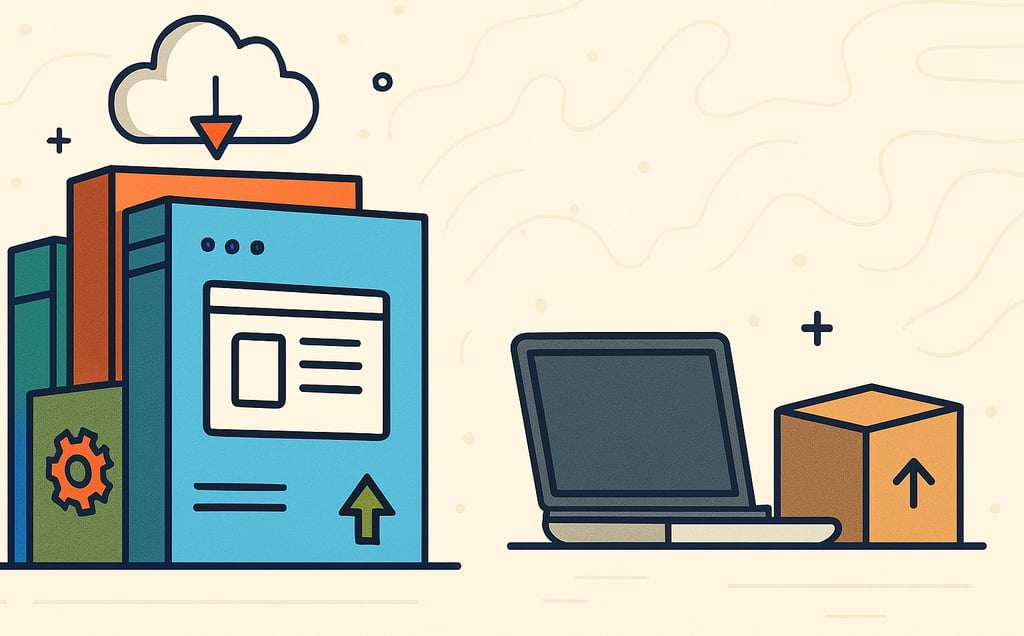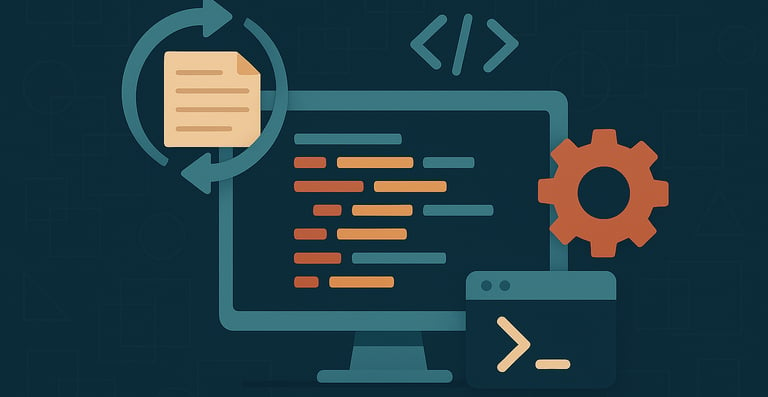Bloatware Is Not Innovation: A Call for Lean Technology
"A true technologist transforms complex systems into a simple and accessible approach"
Gilbert G
3/26/20254 min read


This reading is offered from my courtesy and perspective. You might feel free to think differently about what you read here.
There was a time when new software updates felt like opening gifts. New features, better visuals, new tools to explore. It was exciting. But over time, something shifted. Updates became heavier, slower, and filled with things I never asked for. And that’s when I began to realize: modern software is bloated.
We live in a world where performance is often sacrificed in the name of “innovation.” But what we often get isn’t true innovation—it’s clutter. Extra animations, always-on services, invasive telemetry, default apps we never use, and updates that add gigabytes while delivering little to no actual value.
Take Windows, for example. Or Chrome. Once praised for their speed and simplicity, now they consume resources like they own your system. RAM usage skyrockets, disk space vanishes, and worst of all, users have little to no control over what runs in the background. It’s a quiet takeover.
The problem goes beyond annoyance. It’s a question of philosophy. Should progress mean more stuff, or should it mean better stuff? Should innovation be measured by the number of features, or by the quality, performance, and efficiency of those features?
I believe that a true technologist transforms complex systems into simple and accessible solutions. That’s real innovation: making things work better, not just bigger.
The future of tech shouldn’t be more—it should be better. We need tools that respect our resources, and I'm not even talking about protect our privacy, and give users control. We need systems that are transparent, lightweight, and purpose-driven. We need to stop applauding software that does more, and start celebrating software that does things right.
Because in the end, simplicity is not the absence of complexity—it’s mastery over it.




Technical Deep Dive: Principles for Building Lean and Powerful Software
While the general view of bloat highlights the user-facing symptoms, there’s a deeper issue beneath the surface: software architecture, programming paradigms, and system design choices.
Let’s be clear: performance doesn't happen by accident. It requires deliberate engineering. The following principles form the foundation of a truly efficient software stack:
1. Concurrency over Complexity
Many modern applications rely on excessive abstractions and multitier architectures that increase latency and CPU usage. Instead, efficient concurrent programming—using threads, coroutines, or async models—can manage multiple tasks without bloating the system.
Languages like C++, Rust, and Go offer low-overhead concurrency mechanisms that can replace bloated services running in parallel with more elegant, controlled execution.
2. Fewer Dependencies, Greater Control
Heavy applications often rely on dozens of third-party libraries, each with their own overhead and update cycles. Stripping software down to essential dependencies not only improves performance, it reduces the attack surface, builds resilience, and fosters maintainability.
3. Minimalist Architectures
Not every problem needs microservices, containers, or virtual machines. Sometimes, a monolithic binary built with efficient memory management is the better choice. Evaluate architecture based on the actual problem, not on trendiness.
Tools like Alpine Linux, musl-libc, and BusyBox demonstrate how powerful minimalism can be.
4. Resource Transparency
A key issue with bloat is that systems run opaque processes in the background, consuming power and bandwidth silently. Lean systems should expose their performance footprint—CPU usage, memory consumption, power draw—and allow users to act on that information.
System monitoring tools, command-line utilities, and simple graphical dashboards can offer this without adding extra layers of overhead.
5. Doing One Thing Well
Inspired by the Unix philosophy, applications should be modular and focused. A tool that does one job perfectly is far better than one that tries to do ten things poorly.
Recommended Books and Research Articles
The Art of UNIX Programming by Eric S. Raymond
A deep dive into the philosophy of minimalism and doing one thing well.Designing Data-Intensive Applications by Martin Kleppmann
A modern guide to building scalable, maintainable, and lean backend systems.Operating Systems: Three Easy Pieces by Remzi H. Arpaci-Dusseau and Andrea C. Arpaci-Dusseau
Explains core OS principles that help understand performance at the system level.Rust for Rustaceans by Jon Gjengset
Goes beyond beginner Rust and into systems-level performance and concurrency.A Philosophy of Software Design by John Ousterhout
Emphasizes simplicity, modularity, and clarity in software design.Wirth’s Law
“Software is getting slower more rapidly than hardware is getting faster.”
These readings offer practical and theoretical insights for anyone committed to building software that’s not just new—but better.
I hope you liked this reading.
The path to building better software isn’t paved with more features or more dependencies. It’s about designing for clarity, purpose, and efficiency. When we embrace simplicity—not as a limit, but as a design principle—we move closer to the kind of tech that empowers rather than overwhelms.


Technical Deep Dive: Principles for Building Lean and Powerful Software
INVATS
Tech solutions for your business needs and goals.
Contact
© 2025. All rights reserved.
